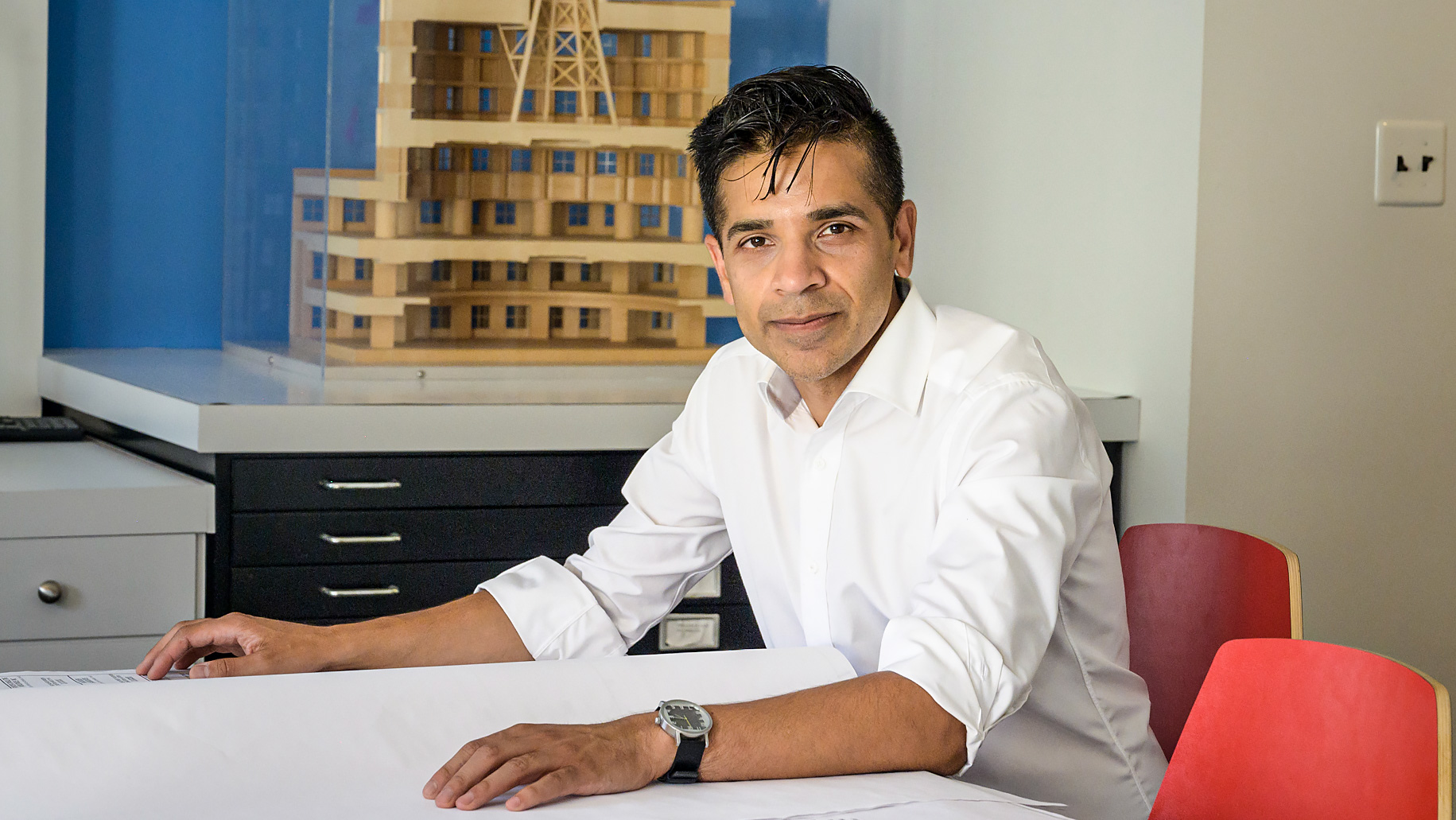Atif Qadir ’04, ’05, thinks real estate developers—especially those interested in social change—are leaving a big pile of money on the table. “One hundred billion dollars, to be exact,” says Qadir, who double-majored in architecture and urban planning at MIT. “That’s the total amount of tax breaks and incentives that go unclaimed each year by developers working in decarbonization, affordable housing, downtown revitalization, and job creation.”
Two years ago, he decided to do something about it. He launched REDIST—a startup that helps developers identify available local, state, and federal subsidies for development projects.
Qadir’s professional career began with a design job at a New York architectural firm, after which he completed an MBA at Columbia University in 2014. Then he signed on with Extell Development before founding his own development company, Amanat Properties, in 2017. The following year, the mayor of Hoboken, New Jersey, appointed him to the city planning commission. That was the turning point. “I saw firsthand the strong connection between public policy and the built environment,” says Qadir.
This story is only available to subscribers.
Don’t settle for half the story.
Get paywall-free access to technology news for the here and now.
Subscribe now
Already a subscriber?
Sign in
He was inspired to create a platform he could use to guide developers through the morass of shifting incentives. “Something where you could type in an address and get a list of all available incentives,” Qadir says. “It sounds simple, but it isn’t. The regulations are changing constantly. The data and information available from public agencies is shockingly fragmented. And the smaller developers, the ones who would truly benefit from those subsidies, have to jump through so many bureaucratic hoops that most give up.”
In 2019, Qadir and Amanat investor Jonathan Kuo decided to build a prototype for target customers rather than a pitch deck for VCs, and they launched REDIST in January 2020. It had its first paying customers by 2021 and has been steadily growing since.
During meetings with potential clients, Qadir and Kuo quickly realized that users didn’t want a computer program or a data stream to wade through. They wanted a partner in the process. This is what REDIST provides. The company earns revenues based on the success of its clients’ projects, but the appeal isn’t just the savings offered to developers; it’s also the mission that REDIST helps support.
“Decarbonization. Affordable housing. Job creation. Downtown renewal. These are issues that should be close to everyone’s heart, regardless of our political leanings,” Qadir says.
